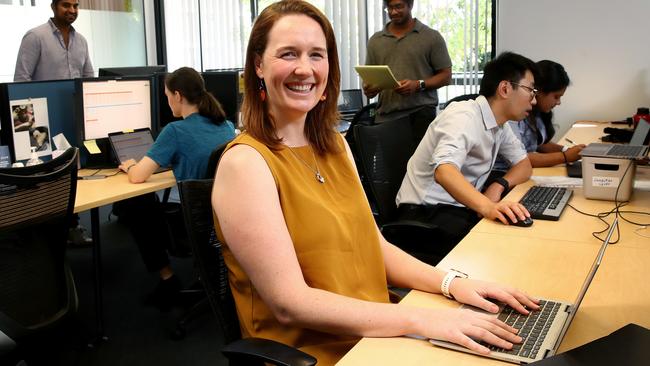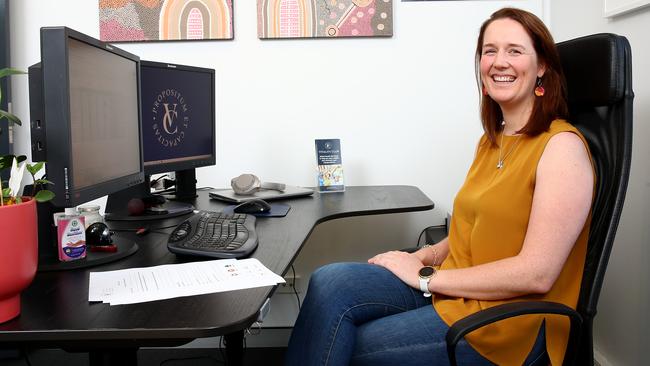Real reason bosses want you back in the office
In a COVID world, many Aussie workers still want to WFH, while employers want them back in the office.
Careers
Don't miss out on the headlines from Careers. Followed categories will be added to My News.
The biggest cultural shift since the eight-hour work day was introduced will be experienced in offices this year as employers and workers wrestle over the location of where to work.
A hybrid model is forecast to win out but how many days will be spent at home and the office and what effect that will have on team dynamics and productivity is unknown, with the perfect formula yet to be established.
Both employers and employees may need to compromise as employers rely on having engaged staff, and workers increasingly value job security.
Before the COVID-19 pandemic forced most office workers to work from home, the University of Sydney Business School reports 19 per cent of employees regularly worked from home.
The annual Robert Walters Salary Survey reveals 85 per cent of professionals want current flexible working arrangements to continue, with 43 per cent wanting to work remotely full time and 42 per cent wanting the option at least one day a week.
Meanwhile, 60 per cent of business leaders say they do not want to continue with flexible working arrangements because of productivity issues, logistic difficulties and dips in work quality.

The survey reveals a significant decline in importance of salary to workers this year, with 32 per cent linking remuneration to personal job satisfaction, compared to 92 per cent in 2020.
It now ranks fourth after a good workplace culture, job security and workplace flexibility.
Managing director (ANZ) James Nicholson says 2021 will see a “resetting of the employment landscape”.
“How this rebalancing of the working environment and bridging of the expectation gap is managed now has the potential to dictate the future of the workplace for decades to come,” he says.
Despite many workers saying productivity increases when working at home, HubSpot’s 2020 Remote Work Report finds 58 per cent of workers felt there was no improvement nor decline in their performance last year, whether at the office or home.
Thirty per cent had significantly more meetings since they started working remotely, yet 40 per cent had a harder time participating in meetings when everyone was remote.
Almost half (47 per cent) of Australian workers were concerned about effectively collaborating when working in a hybrid team, along with 23 per cent who were concerned about productivity, 15 per cent a decline in culture, and 10 per cent burnout.
HubSpot APAC sales head Kevin Ackhurst says inclusion and a sense of belonging is a critical driver of employee productivity and engagement and being together in an office can play a key role in creating that.
“Creating an inclusive environment doesn’t just happen naturally,” he says.
“Without an office where opportunities to build rapport, make small talk, or ask colleagues questions, it’s common for remote workers to feel disconnected and disengaged.
“This raises the importance of managers focusing on the diversity of their teams to ensure everyone feels included and belongs.”
People analytics company Peakon chief executive Phil Chambers warns some staff may become ostracised without in-person connections.
“While platforms like Slack provide the opportunity for voices to have an equal-footing, they also afford more room for voices to go unheard,” he says.
“The danger is that social lines won’t be dissolved by workplace instant messaging apps, but
that they will become stronger.
“For managers this is particularly pronounced, since there are more hurdles when it comes to
connecting and integrating with a pre-existing team in a digital-only space.”
GetApp and Gartner Digital Markets research reveals two or three days a week in the office is most favoured by workers (35 per cent).
Eighteen per cent of workers prefer to work remotely once a week, 12 per cent once a month, and 10 per cent on the odd occasion, while 22 per cent prefer to do so every day.
While 83 per cent cite satisfaction when working remotely, 34 per cent have struggled to establish boundaries with the people they live with, 79 per cent feel pressure to put in more hours than they would if working from the office and 36 per cent already are working more hours.
A further 52 per cent have poor internet connectivity.
Gartner Digital Markets content analyst Sonia Navarrete says businesses will need to find new ways to ensure staff can work both in the office and remotely seamlessly.
“Businesses that are looking to successfully implement a hybrid work model will need the right software in order to build a robust digital infrastructure, together with training and support for their employees to ensure the correct implementation of this model for the long haul,” she says.

Gemma Whitley is enjoying being back in the office five days a week.
While returning, within government guidelines, is being encouraged by her employer, she actually prefers it.
“As a manager I really enjoy being able to have real time check-ins with my staff,” she says.
“Being able to talk to them and see them in person gives me a better read on how they are doing, not just in regards to certain tasks or duties but in general.
“The water-cooler chat that naturally occurs in an office environment gives you great insight into what’s going on in a colleagues life both inside and outside of work.
“It’s been much easier to get a read on how our teams are really doing by being able to chat and observe body language or conversations coming up organically.
“This is harder to convey virtually.”
The general manager of Vitality Club, which supports senior Australians to help them remain healthy, active and live independently, says much of its work was able to move online.
But she believes brainstorming and workshopping ideas with co-workers is much more effective when conducted face-to-face, while rapport and meaningful connections also can only be build in person.
“Being back in the office has largely eliminated virtual fatigue and it’s great to be able to workshop problems in real time,” she says.
Originally published as Real reason bosses want you back in the office




